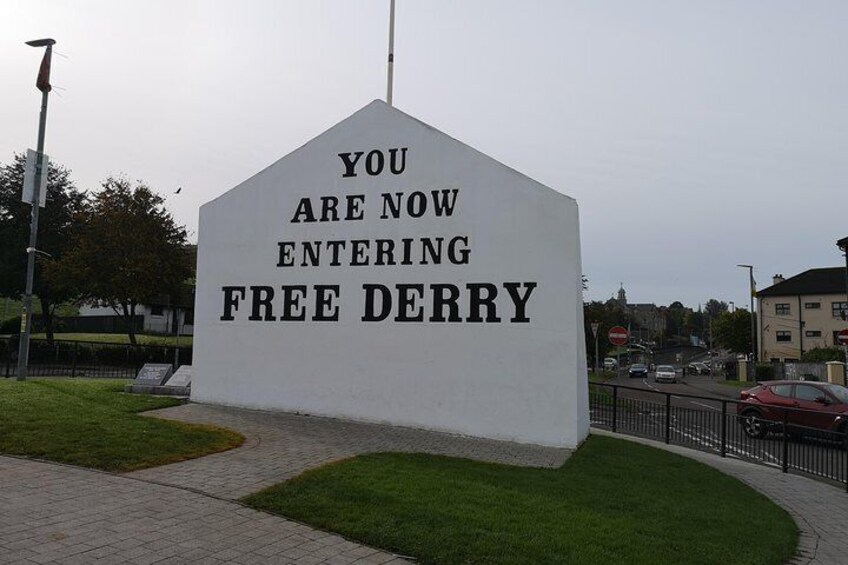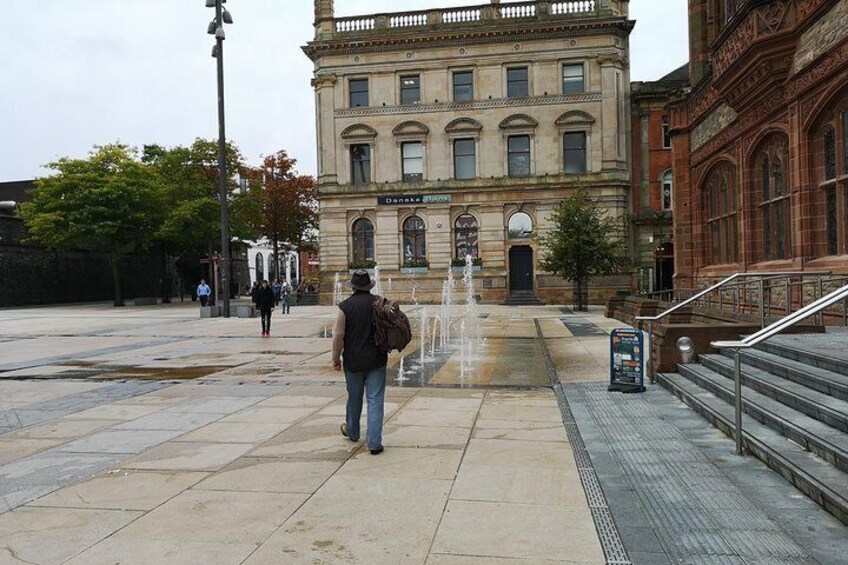Members save 10% or more on over 100,000 hotels worldwide when you’re signed in





Derry Londonderry Private Full Day Tour From Belfast
10/10
10 out of 10Features
- Free cancellation available
- 8h
- Mobile voucher
- Skip the line
- Instant confirmation
- Selective hotel pickup
Overview
A Completely Unique Private Tour with a Professional Tour Guide including Private Transportation.This Tour is completely Unique in that it is not offered by ANY other company ANYWHERE in Northern Ireland.It is an amazing day out in beautiful ancient County Derry/Londonderry!This tour would suit previous visitors to Northern Ireland who have did all the other sights!
You will learn about the Battle of the Bogside,Operation Motorman and Bloody Sunday.Your guide will take you through the area in which those tragic events took place, show you where thirteen civil rights marchers where shot dead by the paratroopers of the British Army, your guide who is also a local historian as well as a political activist will also take you on your own private tour of the ancient city walls where you will learn about the siege and plantation as well as the politically charged murals and street art depicting various events related to the city and beyond as well as the historic canons dotted through city.
Activity location
- Free Derry Corner
- Rossville Street/Fahan Street
- BT48 6AQ, Derry, United Kingdom, United Kingdom
Meeting/Redemption Point
- Free Derry Corner
- Rossville Street/Fahan Street
- BT48 6AQ, Derry, United Kingdom, United Kingdom
Check availability
Derry Londonderry Private Full Day Tour From Belfast
- 8h
- English
Pickup included
What's included, what's not
- Private transportation
- Do a Private Bloody Sunday Walking Tour
- Your Very Own Private Minivan So You Can Stop When You Need To
- Benefit from the personalized service and itinerary of a private tour
- Air-conditioned vehicle
- Optimize your time with hassle-free round-trip transfer from your hotel
- Fully Qualified Professional Local Guide
- Gain intimate insight into Derry’s history and culture from your guide
- Derry Girls Murals
- See Derry in 1 DAY!
- Includes a Private Guided Tour of Derry City's Ancient Walls
- Learn more about the city’s former conflict from your guide
- Let your driver handle navigation, leaving you free to admire the city
- Absolutely Unique Private Tour
- Lunch
- Tip for your Guide
- Upgrade to Top of The Range Luxury Mercedes Benz V-Class for £30(Where Available)
- Tower museum Derry Adult £4
- Add extra time to your tour from £80 per hour
- Pickup and drop back off from Cruise Ship Extra £25 each way paid directly to your Tour Guide Cash
Know before you book
- Wheelchair accessible
- Infants and small children can ride in a pram or stroller
- Infants are required to sit on an adult’s lap
- Transportation options are wheelchair accessible
- All areas and surfaces are wheelchair accessible
- Suitable for all physical fitness levels
Activity itinerary
Free Derry Corner
- 30m
- Admission ticket included
The Bogside Artists
- 15m
- Admission ticket included
Republican Murals: Bloody Sunday
- 15m
- Admission ticket included
Bloody Sunday Memorial
- 20m
- Admission ticket included
The Derry Walls
- 30m
- Admission ticket included
Guildhall
- 30m
- Admission ticket included
Peace Bridge
- 30m
- Admission ticket included
Peace Flame
- 10m
- Admission ticket included
Tower Museum
- 30m
- Admission ticket not included
Museum of Free Derry
- 30m
- Admission ticket not included
St. Columb's Cathedral
- 30m
- Admission ticket included
Derry Girls Mural
- 20m
- Admission ticket included
Grianan Of Aileach
- 30m
- Admission ticket included
Location
Activity location
- Free Derry Corner
- Rossville Street/Fahan Street
- BT48 6AQ, Derry, United Kingdom, United Kingdom
Meeting/Redemption Point
- Free Derry Corner
- Rossville Street/Fahan Street
- BT48 6AQ, Derry, United Kingdom, United Kingdom